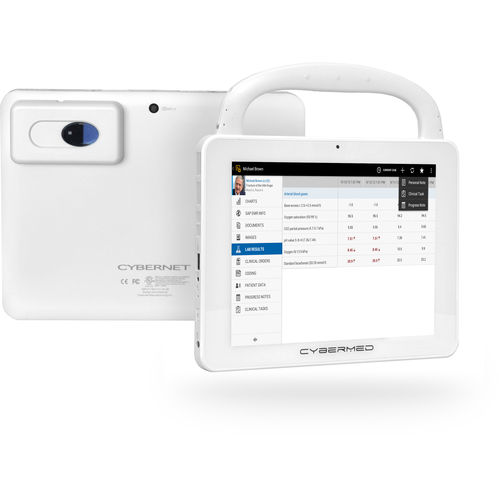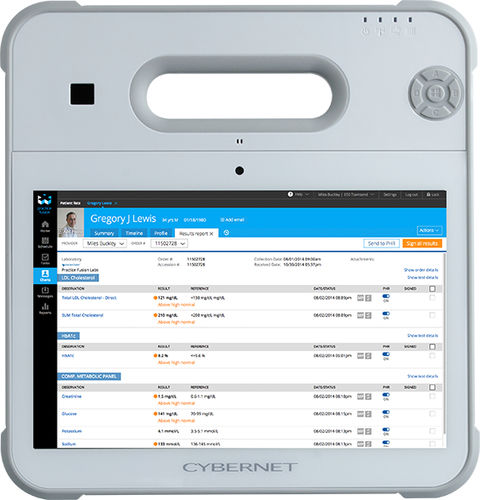
#Industry News
How Telemedicine Improves Maritime Healthcare
Giving quality healthcare to those trapped at sea.
Roughly 90 percent of the world’s food, fuel, raw material, and manufactured goods are transported by sea. That means anything impacting the maritime industry can quickly ripple throughout the global economy.
The COVID-19 pandemic, and the following lockdowns to contain it, did just that. Ports and their life-saving medical clinics and hospitals were forced to turn away ships. This left crews stranded at sea for weeks to even months at a time.
Maritime organizations, which have been dealing with these healthcare gaps for years, are turning to technological solutions like telemedicine.
No Doctors on Board
Merchant vessels do not employ a full-time, onboard physician. There’s not enough crew members (less than a dozen) to justify the high costs. Ships instead carry a well-stocked medical chest filled with essential medications while officers receive basic medical training.
Even military ships like cruisers and submarines have a similar setup. On them, a Navy Corpsman usually performs first aid and other basic medical duties.
The only exception involves fleets with aircraft carriers. These massive vessels employ full-time medical staff including surgeons. Seriously ill crew members from smaller ships in the fleet can be transported to the carrier as necessary.
First Aid via Radio: TMAS
Commercial vessels rely on a service, called Maritime Telemedical Assistance Services or TMAS, to deal with a crew member who is too ill to treat, injured too severely, or the medical chest is simply out of the right meds. This free service connects the crew to on-shore medical personnel like a clinician and is available 24/7.
TMAS has several limitations. A major one is that it relies on radio. As Adrian Schindler, business development manager at Marlink, a maritime remote communications company, has pointed out:
“How it’s [(TMAS)] done today, [a designated person on the ship] would call a hospital and they would vocally give some measurement readings from the equipment on board. The doctor might also ask to be sent some images or file transfers over email. That is quite cumbersome in a stressful situation when you have a medical emergency.
”You also have to consider the [language barriers] and various English accents. Sometimes you can encounter very basic problems, with people confusing ‘fifteen’ and ‘fifty’, or using different scale measurements.”
Costs for Diversions
Clinicians have only two choices for crew members too seriously ill or injured to be further treated onboard:
Be flown to the ship via helicopter to treat the crew member.
Divert the ship to the nearest port for the crew member to be treated at a hospital.
Such diversions are costly. The International Maritime Health journal, in a 2013 study, found one in five ships each year had to make such a diversion for medical emergencies. Each one averaged $180,000 while costing the maritime sector nearly $170 million a year.
Note these figures do not include the cost of fuel used to get to the port. Nor does it include additional crew wages for the travel and any wait time once there. And when the ship is finally underway, there may be financial penalties on the cargo for its late arrival at the destination. All these “hidden” expenses further drain shipping companies’ already tight profit margins.
Bringing Telemedicine to the High Seas
Telemedicine, or the remote diagnosis and treatment of patients by use of telecommunications technology, is being examined as one possible solution.
XChange Telemed illustrates how one such telemedicine system would work. Created by Marlink and launched in 2016, the portable kit is composed of three parts:
Medical devices such as an electrocardiograph, an otoscope, a dermascope, a stethoscope, a glucometer, a thermometer, and an ultrasound scanner. All have been certified by the European Union.
A satellite and communication exchange system platform.
Web portal access by clinicians for 24/7 access anywhere there’s Internet connectivity.
Crew members use the devices as per the included instructions. The secured data is sent to the clinician in real-time, who gives treatment plans. Crew medical records from on-shore healthcare groups can be synced with the kit and vice versa to provide better triage.
Use of telemedicine like XChange Telemed is based on earlier studies showing at least 20 percent of medical emergencies from diversions could have been resolved with telemedicine. The figure represents such a savings in both time and money that even the navy has stakeholders in the emerging technology.
Continued Schindler: “The values measured by each device are digital, so it gets synchronized to the station, and from the station to shore. The important point here is that the person making the examination doesn’t have to connect any USB cables, or make any transfers. It’s really about saving time and it’s automatic.”








